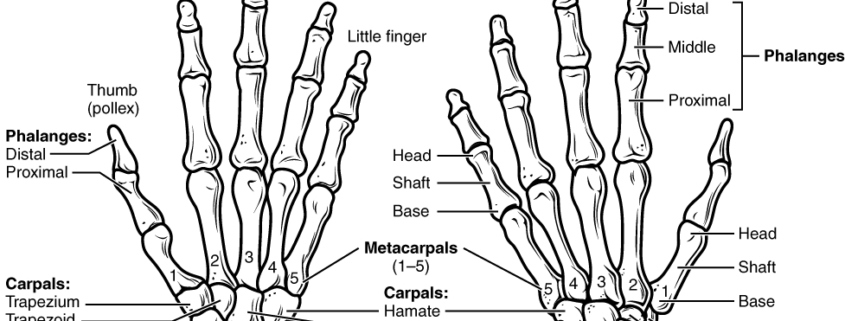Hand Anatomy

Overview
Our hands are complex and essential tools, enabling us to perform a wide variety of tasks with precision and control. An understanding of hand anatomy can be beneficial, whether you are experiencing a health problem or just curious about how these complex structures function. This guide will explain the major components of the hand, including bones, muscles, tendons, and ligaments. With an estimated 27 bones in each hand, they represent about 25% of all bones in the human body.
Types
The hand is divided into three main sections: the wrist, the palm, and the fingers. The wrist, also known as the carpus, is composed of eight small bones. The palm of the hand, known as the metacarpus, consists of five larger bones. Lastly, our fingers and thumb, known as the phalanges, are comprised of 14 bones with the thumb containing only two bones, unlike the fingers which each have three.
Causes of hand anatomy disorders
Various conditions and injuries can impact the function and structure of our hands. Trauma, natural aging, arthritis, nerve conditions, and certain types of infections may lead to hand disorders. Additionally, repetitive stress or overuse can lead to problems like carpal tunnel syndrome or tendonitis.
Symptoms
Hand anatomy disorders can present with varied symptoms, depending on the specific condition. Common themes include:
-
- Pain or discomfort
-
- Swelling
-
- Stiffness or limited joint movement
-
- Numbness or tingling
-
- Deformity or change in appearance
Unexpected symptoms or severe pain should not be ignored and must be brought to medical attention as soon as possible.
Diagnosis
Diagnosing hand anatomy disorders typically involves a comprehensive medical history, physical examination, and diagnostic tests. The physician might ask about symptoms, injuries, day-to-day activities, and any conditions that might affect the hands. Diagnostic imaging (X-rays, MRI, ultrasound) can provide valuable information about the bone and soft tissue structures in your hands. In some cases, specialized tests like electromyograms (EMG) can further evaluate nerve and muscle function.
Treatment Options
Treatment options for hand disorders can range from non-invasive therapies to surgical interventions, depending on the severity of the condition.
-
- Non-surgical treatments: These might include physical therapy, immobilization with a splint or brace, medication for pain and inflammation, or corticosteroid injections.
-
- Surgical treatment: For severe or unresponsive cases, surgery might be the best option. There are numerous surgeries used for hand conditions, including joint replacement, nerve release procedures, and fracture repair.
Always remember to discuss potential risks and benefits with your doctor to decide the best treatment plan for your needs.
Living With Hand Anatomy
Whether you’re dealing with a chronic hand condition or recovering from injury, it’s important to practice good hand care. This includes keeping the hands clean to avoid infection, using them in healthy ways to prevent overuse, and exercising them to maintain strength and flexibility. Regularly applying a moisturizer can also keep your skin supple and healthy.
When to Seek Help
If you’re experiencing persistent pain, swelling, stiffness, or change in functionality of your hands, it’s essential to seek medical help as soon as possible. These could be signs of a serious condition that requires prompt attention. Above all, prioritize your health and don’t delay in reaching out to healthcare professionals.
